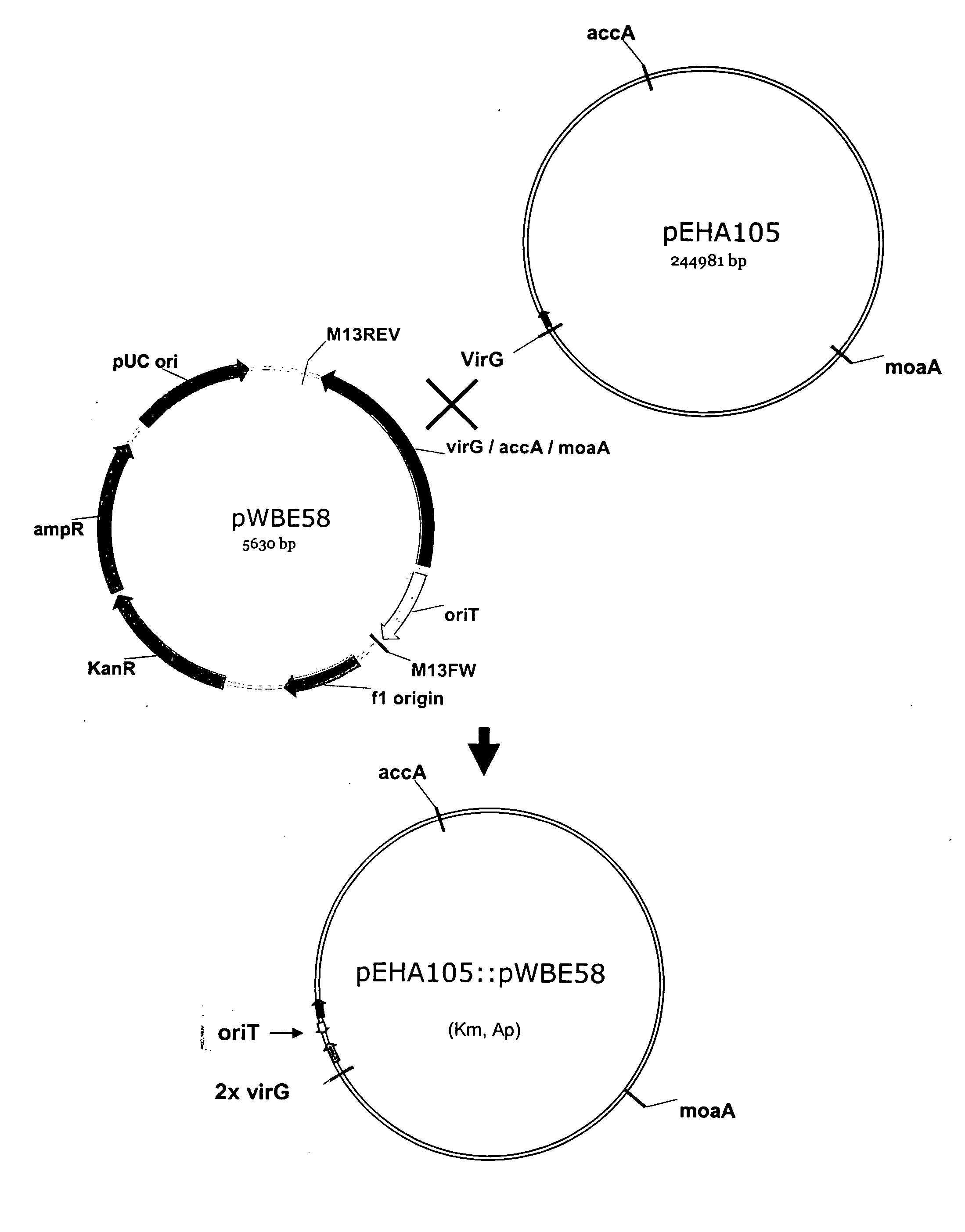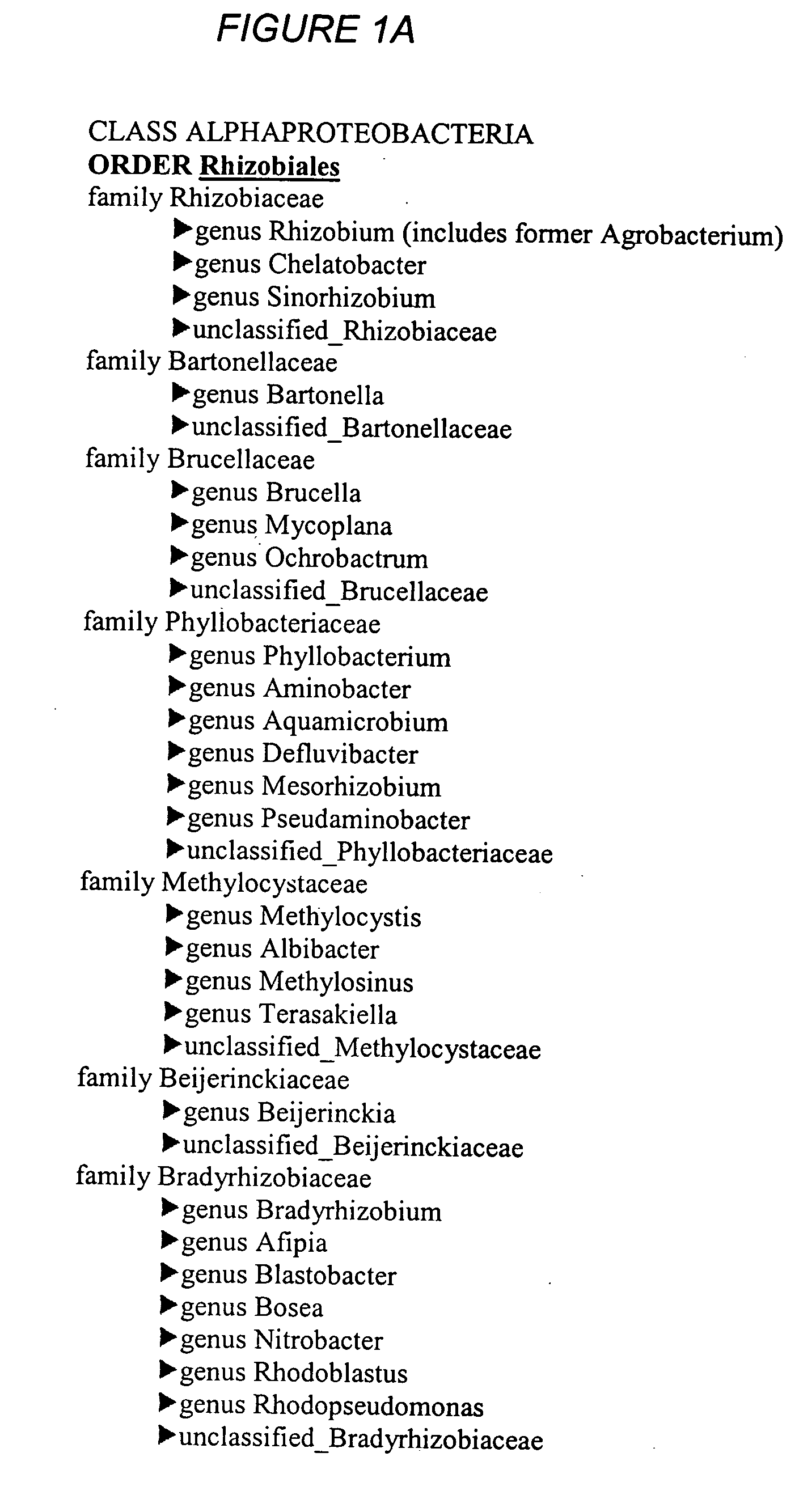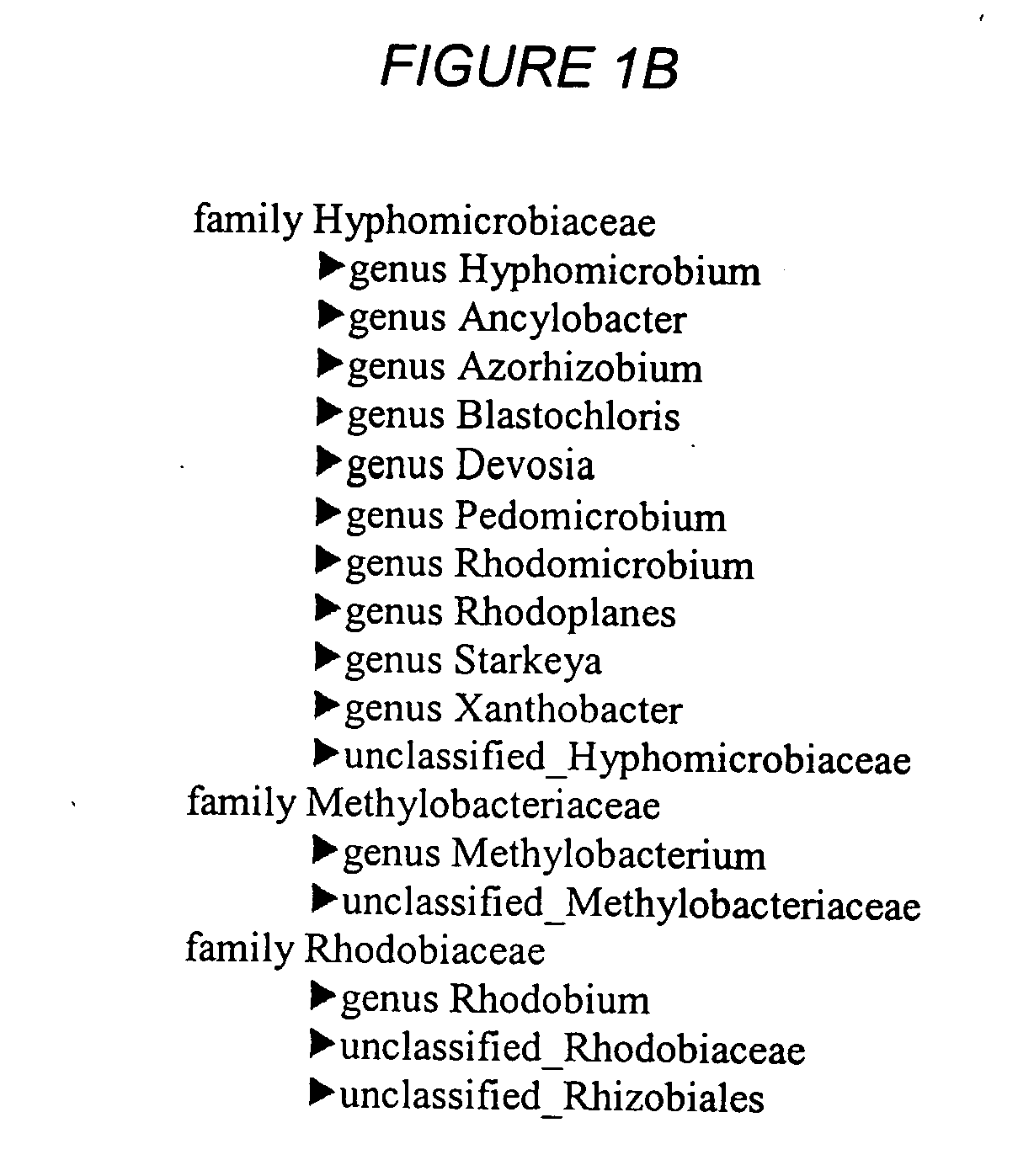Biological gene transfer system for eukaryotic cells
a gene transfer and eukaryotic technology, applied in the field of biological gene transfer system for eukaryotic cells, can solve the problems of mutagenic methods, complex structure of introduced dnas, and substantial drawbacks of methods in their current practice forms
- Summary
- Abstract
- Description
- Claims
- Application Information
AI Technical Summary
Problems solved by technology
Method used
Image
Examples
example 1
Identification of Bacterial Species that can Transfer DNA
[0076] Divergent bacteria are tested to identify species that are capable of transferring DNA. Strains are obtained from public germplasm banks or isolated from soil, from other natural environments or from any plant tissue. The species is identified by amplification and sequencing of informative genes, including rDNA genes atpD, and recA (Gaunt et al., IJSEM 51:2037-2048, 2001). The DNA sequence of the amplified product is compared to known sequences of specific bacteria. At times, the presence of an amplified product with a predicted size can be used for identification.
[0077] As discussed above, suitable bacterial species naturally interact with plants in one or another way. These include endophytic bacteria that live in association with plants, such as rhizobia, which are known to fix nitrogen and make it available to plants. Also included are bacteria that could attach to plants, i.e. epiphytic bacteria, and which have b...
example 2
Identification of Agrobacterium Strains that can Serve as Donor of the Ti Plasmid, Isolation of the Ti Plasmid and Transfer to Other Bacteria by Electroporation
[0087] The Agrobacterium strain that is used as a source of the Ti plasmid is the hypervirulent strain EHA105, which contains the Ti plasmid pEHA105, a disarmed derivative of pTiBo542 (Hood et al., Transgenic Research 2:208-218, 1993). To confirm the strain, Agrobacterium-specific genotyping primers are designed for the 16S rDNA genes (SEQ ID NOS:22-23) and for the attS genes on either the circular chromosome (SEQ ID NOS:23-24) or on the pAT megaplasmid (SEQ ID NOS:25-26). Primers are also designed to amplify sequences on the Ti plasmid, i.e. for the virG (SEQ ID NOS:27-28) and virB genes (SEQ ID NOS:31-32). These primers are tested for the specific and efficient amplification of Agrobacterium DNA. They are also tested on DNA templates prepared from all the other bacterial species that are assayed for gene transfer. The resu...
example 3
Construction of a Mobilizable Ti Plasmid
[0092] Although the Ti plasmids are generally self-conjugative plasmids, their mobilization under laboratory conditions is cumbersome due to the absence of the specific components and conditions necessary to activate their conjugation machinery. In this example, the disarmed Ti plasmid from EHA105 is made transmissible by insertion of the origin of transfer (oriT) of the RP4 / RK2 helper plasmid. As well, an antibiotic resistance marker is inserted in the Ti plasmid in order to be able to select for transconjugants. The resulting modified Ti plasmid can then be mobilized through the transfer functions provided by the RP4 / RK2 plasmid and selected for.
[0093] The RP4 oriT is inserted into a Ti plasmid utilizing a vector that inserts into the Ti plasmid by homologous recombination. Several types of vectors can be used, such as suicide vectors or broad host range vectors. Suicide vectors contain an origin of replication that is not functional in Ag...
PUM
| Property | Measurement | Unit |
|---|---|---|
| concentrations | aaaaa | aaaaa |
| compositions | aaaaa | aaaaa |
| electrophoresis | aaaaa | aaaaa |
Abstract
Description
Claims
Application Information
 Login to View More
Login to View More - R&D
- Intellectual Property
- Life Sciences
- Materials
- Tech Scout
- Unparalleled Data Quality
- Higher Quality Content
- 60% Fewer Hallucinations
Browse by: Latest US Patents, China's latest patents, Technical Efficacy Thesaurus, Application Domain, Technology Topic, Popular Technical Reports.
© 2025 PatSnap. All rights reserved.Legal|Privacy policy|Modern Slavery Act Transparency Statement|Sitemap|About US| Contact US: help@patsnap.com



